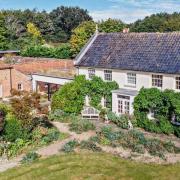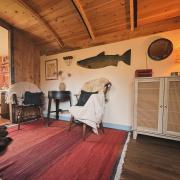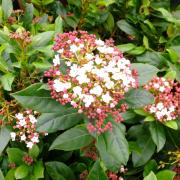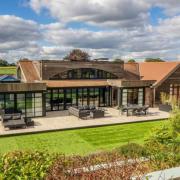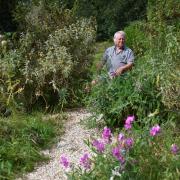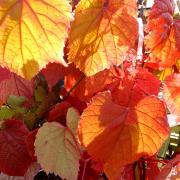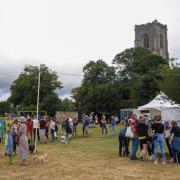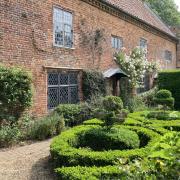The lovely gardens at Sandringham include beds and borders, lawns, lakes and glass-houses, an arboretum and magnolia glade and even a small waterfall.
Every monarch from 1863, when the estate was bought by the royal family, to the present day has helped develop the beautiful gardens and parkland surrounding Sandringham House. There is an oak tree planted by Queen Victoria, two spring-fed ornamental lakes with grottoes created for King Edward VII, enclosed gardens planted in cottage garden style for King George VI, and a shrubbery and shady woodland walk added for Queen Elizabeth II with rhododendrons and camellias from Windsor
King Charles, renowned for his love of horticulture, is already making his mark in the historic gardens, creating a plant-filled, climate-friendly topiary garden from a lawn inside the formal gardens. Once a formal parterre, it was turned over to crops during the Dig for Victory campaign of the Second World War and then became a lawn. Now it has been transformed into a pretty maze of pathways, flowers and sculpted hedges.
The gardens at Sandringham are enjoyed by the royal family and their guests when they are in residence, and the public from April to October.
Jack Lindfield has been head gardener here since 2022 and tells us more:

What do you love most about the gardens?
This time of year is particularly spectacular when The Woodland Gardens start their succession of spring flowering trees and shrubs such as magnolias, rhododendrons, camellias and azaleas.
Which part of the gardens do visitors love best?
It's difficult to choose just one character area, however we do get a lot of feedback on the Shrubbery which offers such an array of early to late spring flowering trees and shrubs such as snowdrops, Hanermelis and Edgeworthia chrysantha. Equally, a lot of our visitors enjoy all of the smaller, more intimate parts of the garden such as the Rockery, where they can sit and ponder in the Nest, a seated structure that overlooks the Upper Lake.

What do you like most about your job?
Horticulture offers so much, with many different elements, it's simply the plants I particularly enjoy and the intrigue they spark. There will constantly be another species to learn about and then within that, new areas of horticulture. From the basics of where something is from, to who first collected it, or the requirements each species needs to make it grow, or simply that it looks beautiful and that’s enough.
How closely do you work with the King on plans for the garden?
His Majesty the King instigates projects and developments in the garden and future plans at Sandringham. My role is to facilitate the vision. It’s a part of my role that I enjoy the most and it’s a pleasure to work for someone with such invested interest.
He is obviously a lover of plants and gardening – has he been known to help out at all?
Oh yes! His Majesty loves the craft and practice of gardening and is never without his secateurs when walking around the gardens.

Does he have favourite plants in the garden?
His Majesty has extensive knowledge of plants, with rare and interesting trees forming a key interest. Favourites include magnolias, especially those cultivars with campbellii parentage which can be found in the garden at Sandringham.
Where did you grow up and how did your gardening career develop?
I began at Easton Walled Gardens (in Lincolnshire) and have since worked for the Royal Horticultural Society and the National Trust. Prior to Sandringham, I was head gardener at National Trust Ickworth in Suffolk.

Do you have your own garden to look after too, and if so, what kind of garden is it?
I particularly love collecting rare and unusual plants that more often than not have more notable foliage than flowers such as the shade-loving perennials podophyllums, trilliums and polygonatum.
What are a couple of the more unusual or remarkable plants?
There are many remarkable trees in the garden, including a 700-year-old oak tree. Many of the trees commemorate or form a dedication to each of the monarchs who has visited Sandringham. There are many trees with plaques at the base, so do read and find out more!

What will be looking particularly splendid this month?
All sorts from some of the later flowering rhododendrons, azaleas and magnolias, all the way through to the early herbaceous perennials such as hardy geraniums, delphiniums and convallaria.
Another favourite is cardiocrinum giganteum, the giant Himalayan lily which can be found in the Fernery.
Sandringham House and Gardens are open until October 11 (apart from July 19 to August 4). Full price tickets are £25 for the house and gardens and £15 for the gardens, with discounts online and for members of groups including the emergency services, Royal Horticultural Association, and for carers. Children under 17 are free. The Royal Parkland is open all year.







